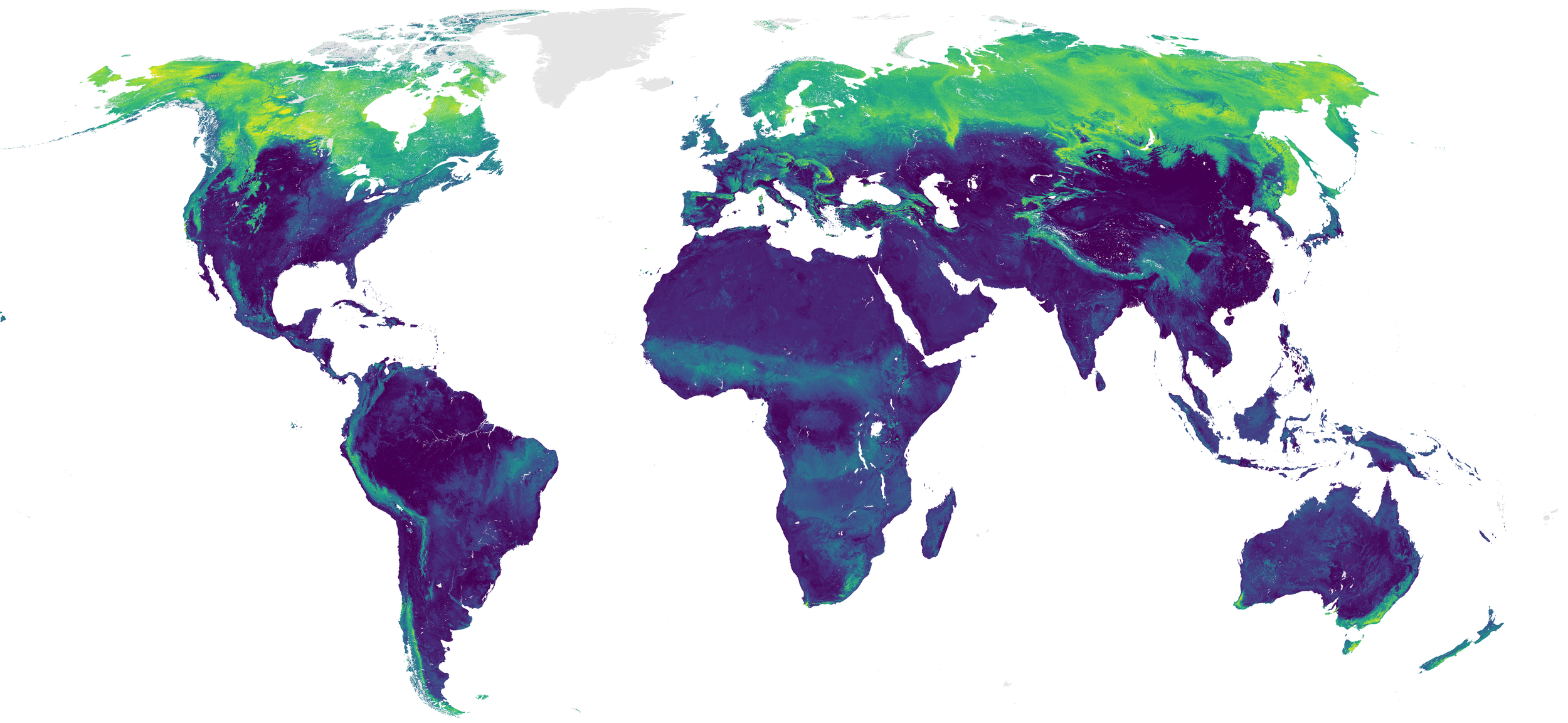Mapping the underground.
Fungi and bacteria have shaped the evolution of life for over 400 million years. Nearly all plants on Earth form symbiotic relationships with these microbes. My research aims to map and forecast plant-microbe symbiosis across scales.
Machine learning map of arbuscular mycorrhizal fungal richness. Here brighter colors indicate more species of AMF live in a given square-km on Earth. The model was made by training a Random Forest on geo-located samples of mycorrhizal biodiversity on the Google Earth Engine platform with SPUN, Global Fungi, and The Crowther lab at ETH Zurich. My research focuses on groundtruthing these data.
Root-system architecture of a Glycine max plant grown in nutrient stressful condition. The image was taken using a custom-built platform illuminated from below with a camera suspended above. The root was cleaned and floated in a transparent tray with water and imaged in dark conditions. Image analysis was then conducted using the above thresholded root system.
About
I have been researching microbiomes for almost 10 years. My research on the evolutionary ecology of microbial symbiosis combines a mixture of computational biology, field sampling, and experimental setups using emerging technologies. I began researching microbiomes and carbon cycling at St. Edward’s University in Austin, Texas. at St. Edward's University. From here I moved on to Villanova University, in Philadelphia, Pennsylvania where I collected the microbiota of the atmosphere with a custom-built mobile sampling platform for their masters. At this stage I developed three-dimensional city models to connect the shape of cities to the bacterial diversity in the atmosphere and disentangle dispersal processes.
Currently my research focuses on the biogeography and symbiosis of microbiota and plants with Toby Kiers and James Weedon at Vrije Universetiet Amsterdam for my PhD. On the Dutch MICROP project, I investigate the evolution of cooperation between bacteria and fungi living on the root systems of diverse plant species under stress. What is novel here is that a phylogenetic approach is taken, to identify if a core group of microbes are recruited to plants under stress. To this effort a high-throughput root imaging platform was developed to facilitate sampling over 500 plant microbiomes without disturbing the rhizosphere microbiota communities.
I am a data scientist at the Society for the Protection of Underground Networks (SPUN). Here I focus on machine learning algorithms of global maps of mycorrhizal fungal diversity. Currently I am leading a global sampling campaign to groundtruth and validate model predictions in the world’s least studied ecosystems including the Amazon Rainforest, Galapagos Islands, Parámo grasslands, Khazak Steppe, and Tien Shen mountains. My research has been covered in news outlets including the BBC, The Conversation, and Discover Magazine. I also engages in artistic collaborations with Amsterdam based InsideOutside studios, The Dutch National Opera, and Waag FutureLabs.

